Sian Williams, dive instructor and supporter of the Gili Eco Trust on Gili Trawangan, Indonesia is on a zero-waste mission to help clean up this profoundly touristy island and beyond.
Even after settling into life at sea level on Gili Trawangan as a scuba instructor and coordinator of marine conservation projects, trekking has always been a big passion of mine.
However, it’s hard to check out every stunning sunrise or sunset across the ocean and see the beautiful summit of Indonesia’s second-highest volcano, Gunung Rinjani (Gunung means mountain in Indonesian) and not want to climb it.
Living in Indonesia has fuelled the natural geographer inside me and I’m in constant awe of the 17,500 islands that are predominantly volcanic with incredible reefs and wildlife that go with them.
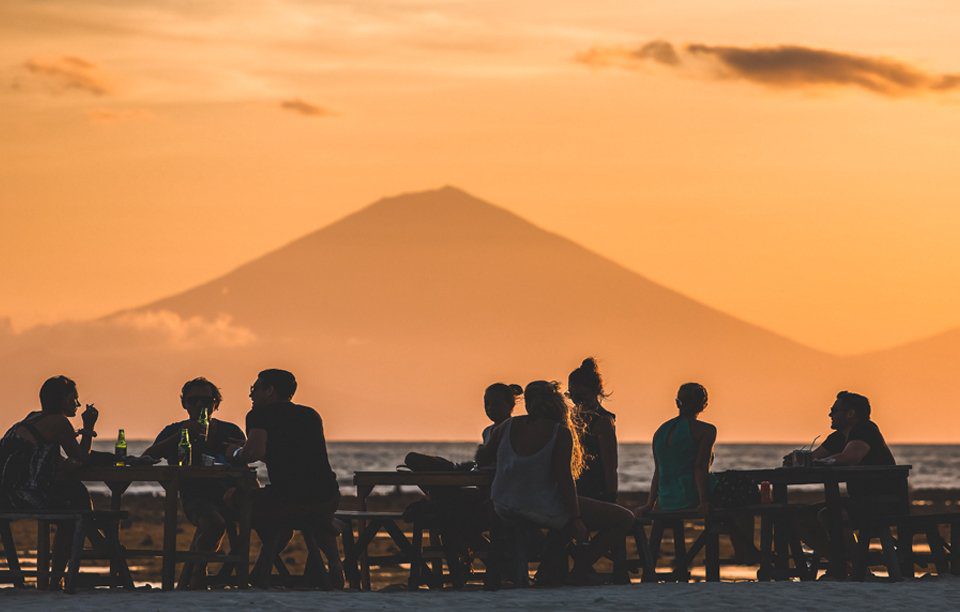
Yet, living here makes you very aware of how inadequately rubbish is managed, how addicted the world is to plastic and how much devastating impact (although positive if done right) tourism can have in developing locations such as here.
I feel that we live in a time where the world needs radical change.
Right now, sadly that change isn’t coming from governments and those in power, so I feel it needs to start on a personal level and we can all play our part.
I’ve been living plastic-free for the last few years and try to create very little waste each month. With a bit of practice, I’ve found these strict habits become easy in a normal routine, which is often different from what can be said for travelling and excursions in general.
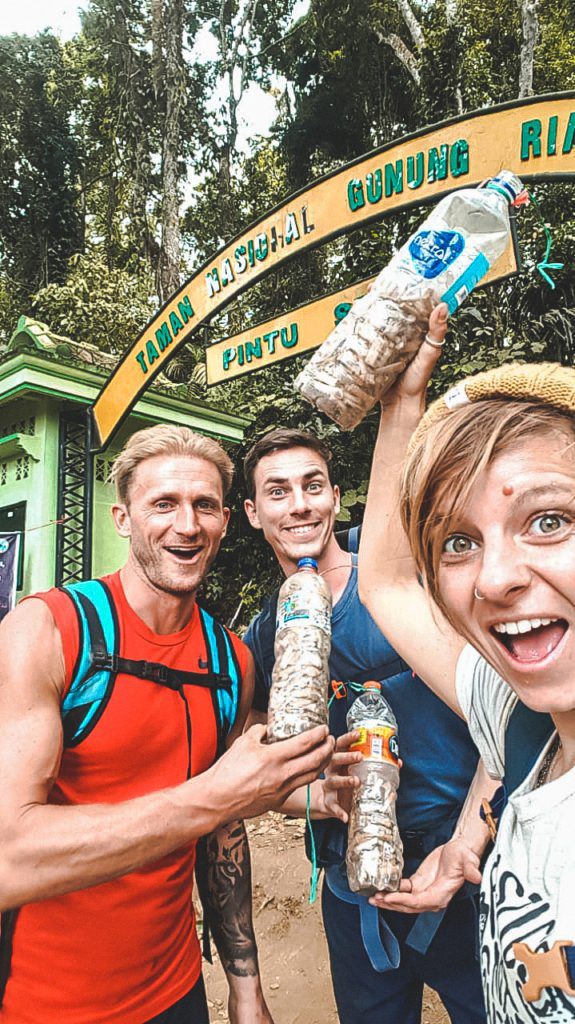
So how do you trek sustainably?
Packing for sustainable trekking takes some serious consideration.
Being on the go and needing a lightweight pack, high energy fuel and plenty of water means that trekking could easily be a huge influence on the use of ‘convenient’ and cheap single-use plastics over more responsible methods.
This is all too common in Indonesia, where you’ll find small plastic sachets, packaged sweets, energy bars and sugary drinks everywhere. Nevertheless, we knew going green was going to be a challenge, and we were determined to find another way.
In August 2018, Gunung Rinjani national park was closed after a series of devastating earthquakes and though they are slowly rebuilding the trails, the mountain has only been re-open for two months.
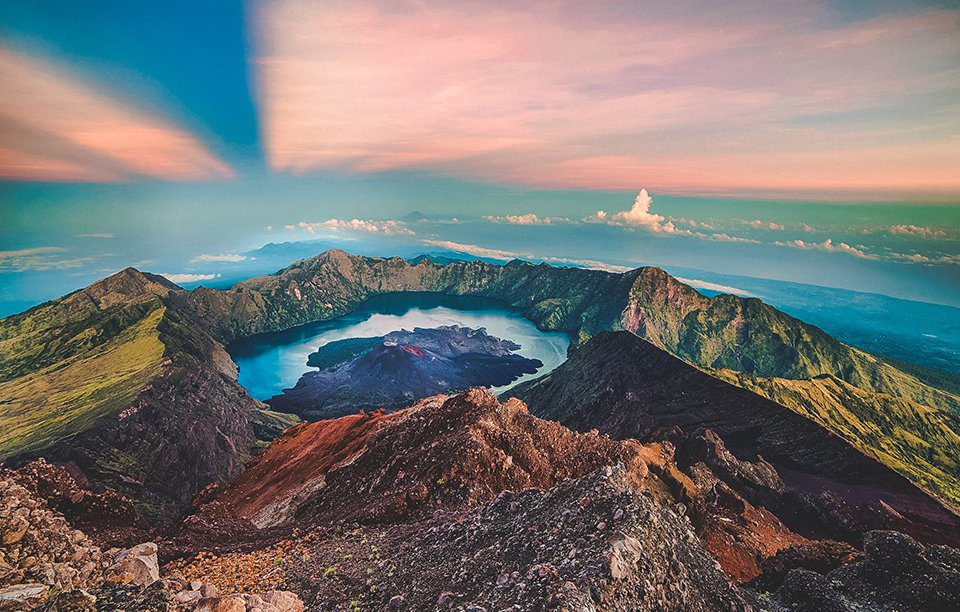
So this was the perfect time to start afresh and show how one environmentally conscious company, can become role models in the world of zero-waste trekking.
Green Rinjani, the only eco-conscious choice to trek Gunung Rinjani, partnered with Gili Travel Agency to create Rinjani’s first totally zero waste trek.
For starters, all of the water was carried up by porters in 7.5-litre refillable jerry cans, where previous trips used to carr 4-6 single-use plastic bottles of water per trekker.
Single packets of dried noodles with three sachets of seasoning were swapped for larger bulk bought dried noodles, rice was carried in banana leaf bundles and seasoning carried up package free in recyclable containers. The usual sugary snacks were exchanged for heaps of fresh fruit on platters – definitely more luxurious and sweeter than most trekking food we’ve tasted in the past!
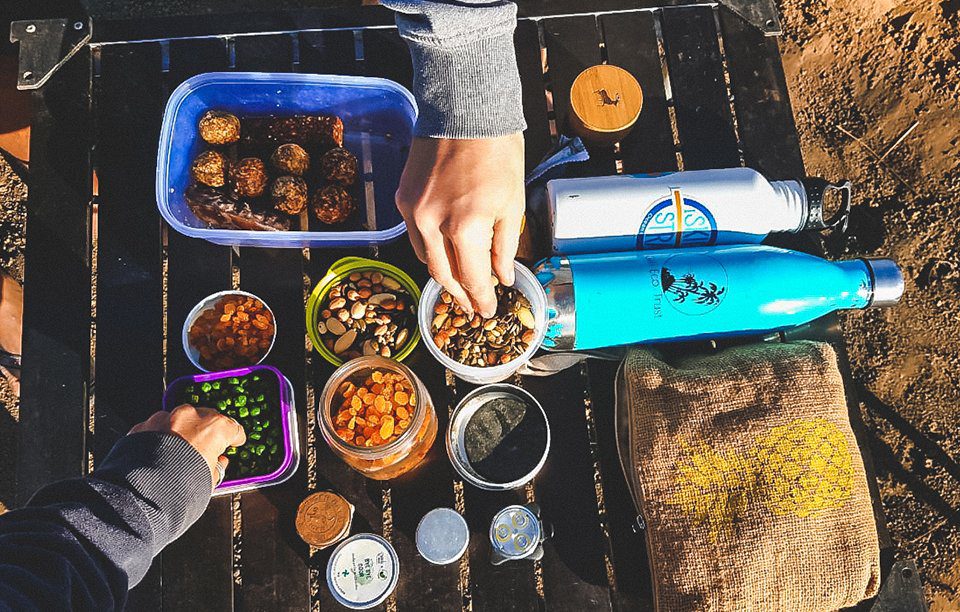
Snacking
Being a little nervous about what food and snacks might be offered along the way, we also brought our own trail mix of high protein nuts, seeds and tasty raisins, along with energy bliss balls stuffed with fruit and high energy goodness.
We carried them all in lightweight recyclable containers with no need for refrigeration as it got pretty chilly at night. Turns out they were more delicious than cheap plastic-wrapped chocolate bars anyway.
Since there are no physical toilets or showers up Gunung Rinjani (or most volcanoes), we left our soap and shampoo bars at base camp and travelled only with bamboo toothbrushes and a tin of plastic-free deodorant. I had powdered dry shampoo but turns out volcanic dust and a bit of wind works just as well.
Some other useful items we took were pawpaw cream, antiseptic and antibacterial handwash in refillable bottles.
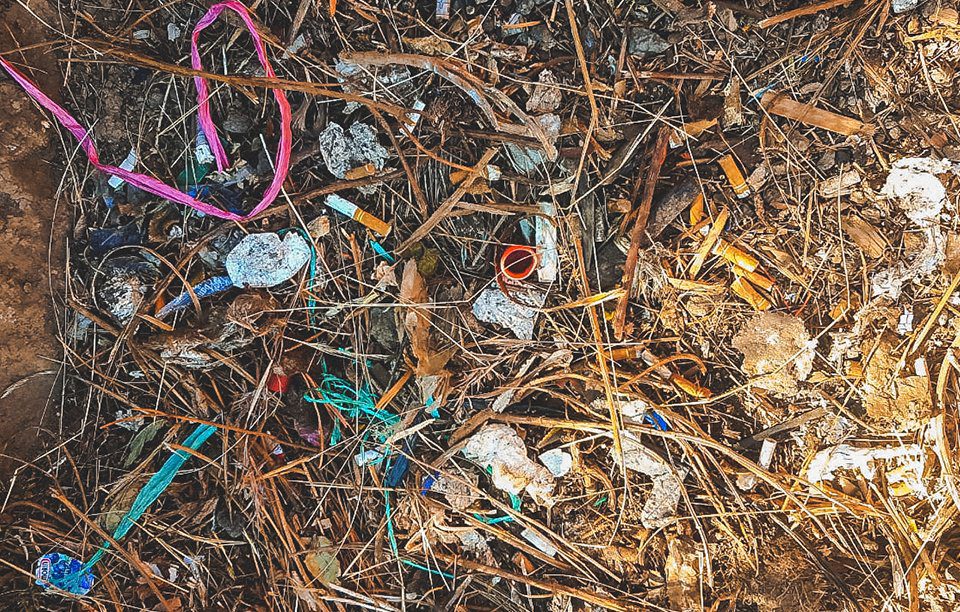
Zero Waste, really?
I’m proud to say that the only waste we made on this adventure was organic. And most of it turned out not to be ‘wasted’ at all because at each lunch post there were tribes of those famous hungry monkeys, who love food scraps supplementing their diet in the dry season when the mountain is climbable.
A few friendly dogs attracted by the smell of cooking chomped all of the leftover rice and chicken. Their numbers were dwindling drastically after the closures and our compassionate guide kept a rescued bag of bread crusts and fruit rinds to feed monkeys at the quieter posts.
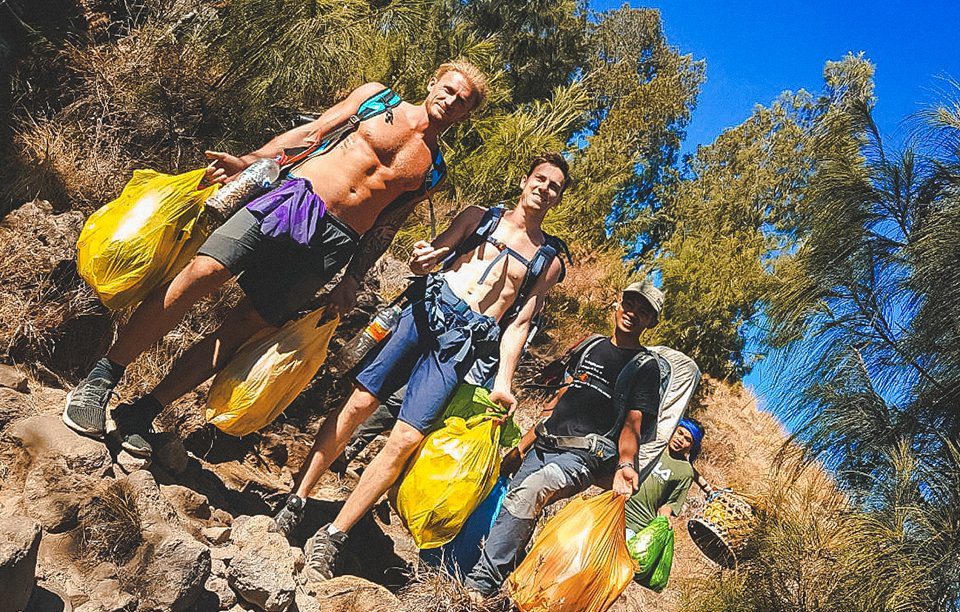
What goes up, must come down
A big shock for me was the sheer amount of waste left by other groups. While there were some groups who took the time to clean up, they then sealed all their trash in plastic bags and shoved it deep into the bushes, for the untrained eye to miss.
The porters of our Green Rinjani group, however, got quickly to work inspiring us to help, filling any plastic bags they found, with even more bags. At each post, we collected more than five bags of other people’s discarded plastic wrappers, sachets, water and soft drinks bottles. Truly disgusting.
The volcano has only been (partially) open for two months since the closures, but who knows what the pollution would look like in a few months’ time, after high season, if there weren’t people continuously cleaning up after irresponsible trekking companies.
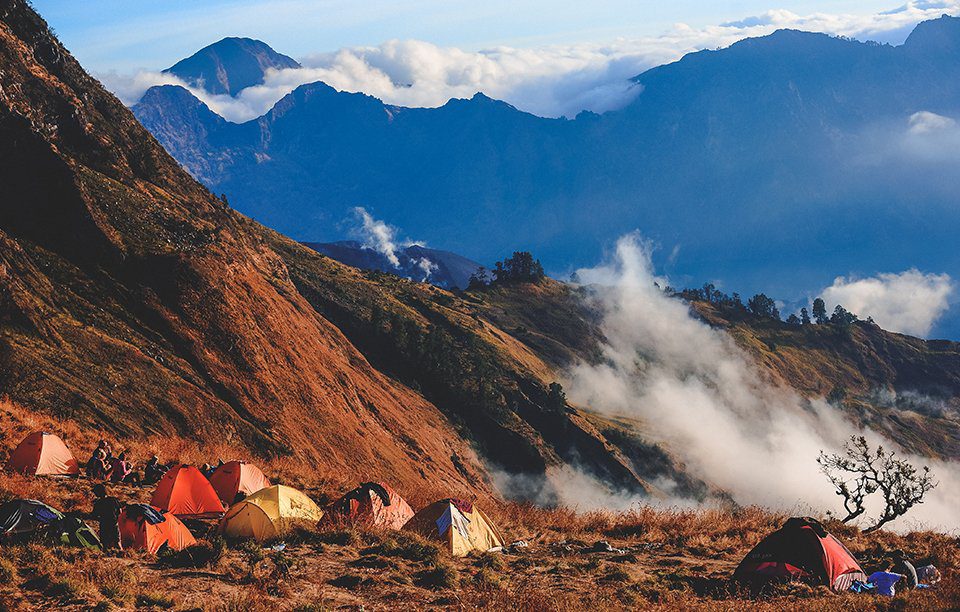
Planting trees and reforestation
Before the earthquakes in August 2018, there were up to 600 people on the volcanic trails at a time. This meant more space was needed in the jungle posts and on the flanks of the volcanos for camping and shade.
Green Rinjani is committed to planting a tree for every trekker they take up Gunung Rinjani, thus helping to combat climate change and reforest Rinjani’s slopes in the process.
We all got to plant a small clove tree – a native species to Indonesia and one readily found in the national park. We were lucky enough to be a group of five with still around 150 other individuals on the entire mountain.
Tourism is desperately needed back in north Lombok to fund the recovery and restoration after four major earthquakes and more than 1,000 aftershocks devastated the area in under a month. The quakes took many lives and destroyed the majority of homes, hotels and businesses in the area.
Now, on the road of rebuilding and recovery, the livelihoods of these guides and porters and the communities in which they live rely on eco-conscious travellers with a huge sense of adventure and positive attitudes to help them show others a more responsible way to the summit.
Green Rinjani Tours run 2-day/night Mt Rinjani treks with a guide, accommodation, park fees, meals, tree planting and clean-ups included and cost around AU$197 per person.
Find out more: www.greenrinjani.com / www.giliecotrust.com or email: indonesiaaskjulie@gmail.com
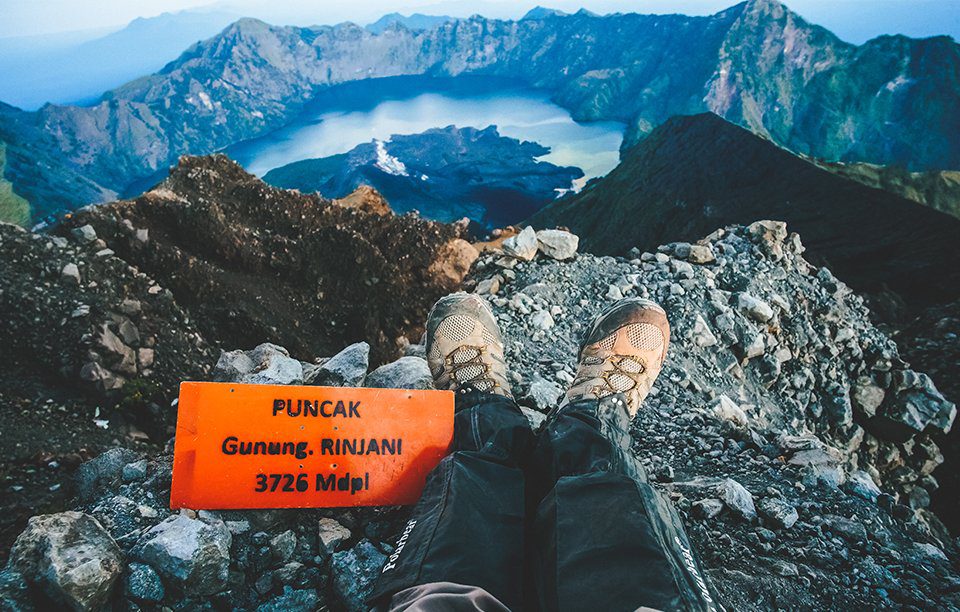
How can you travel to change the world?
Congratulations! By reading this post and taking some of these insights on board, you’ve already made a difference.
Now you can easily create your impact by sharing your new-found knowledge with other friends who you think would also be interested.
Ultimately, responsible travel comes down to common sense – stay curious, keep yourself up-to-date with the challenges at hand and make yourself accountable for your actions on your travels.